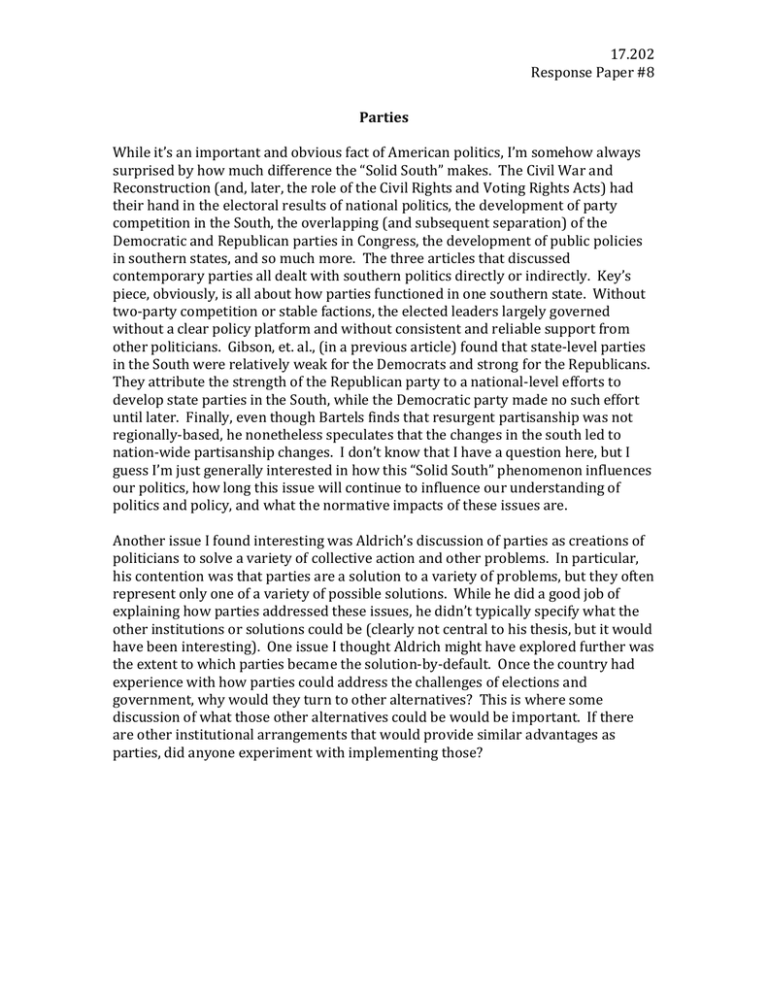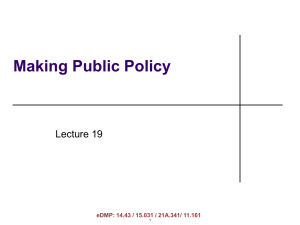17.202 Response Paper #8 Parties
advertisement

17.202 Response Paper #8 Parties While it’s an important and obvious fact of American politics, I’m somehow always surprised by how much difference the “Solid South” makes. The Civil War and Reconstruction (and, later, the role of the Civil Rights and Voting Rights Acts) had their hand in the electoral results of national politics, the development of party competition in the South, the overlapping (and subsequent separation) of the Democratic and Republican parties in Congress, the development of public policies in southern states, and so much more. The three articles that discussed contemporary parties all dealt with southern politics directly or indirectly. Key’s piece, obviously, is all about how parties functioned in one southern state. Without two-party competition or stable factions, the elected leaders largely governed without a clear policy platform and without consistent and reliable support from other politicians. Gibson, et. al., (in a previous article) found that state-level parties in the South were relatively weak for the Democrats and strong for the Republicans. They attribute the strength of the Republican party to a national-level efforts to develop state parties in the South, while the Democratic party made no such effort until later. Finally, even though Bartels finds that resurgent partisanship was not regionally-based, he nonetheless speculates that the changes in the south led to nation-wide partisanship changes. I don’t know that I have a question here, but I guess I’m just generally interested in how this “Solid South” phenomenon influences our politics, how long this issue will continue to influence our understanding of politics and policy, and what the normative impacts of these issues are. Another issue I found interesting was Aldrich’s discussion of parties as creations of politicians to solve a variety of collective action and other problems. In particular, his contention was that parties are a solution to a variety of problems, but they often represent only one of a variety of possible solutions. While he did a good job of explaining how parties addressed these issues, he didn’t typically specify what the other institutions or solutions could be (clearly not central to his thesis, but it would have been interesting). One issue I thought Aldrich might have explored further was the extent to which parties became the solution-by-default. Once the country had experience with how parties could address the challenges of elections and government, why would they turn to other alternatives? This is where some discussion of what those other alternatives could be would be important. If there are other institutional arrangements that would provide similar advantages as parties, did anyone experiment with implementing those? MIT OpenCourseWare http://ocw.mit.edu 17.202 Graduate Seminar in American Politics II Spring 2010 For information about citing these materials or our Terms of Use, visit: http://ocw.mit.edu/terms.




